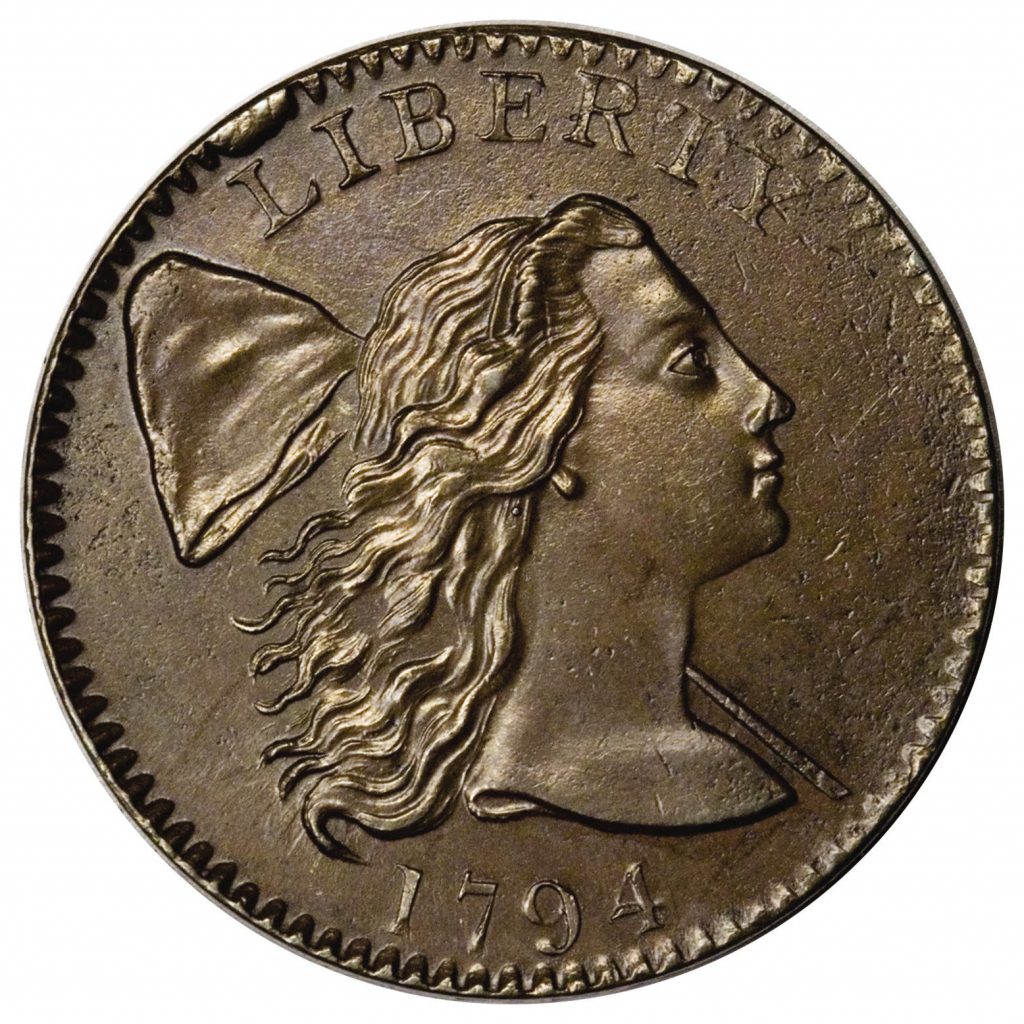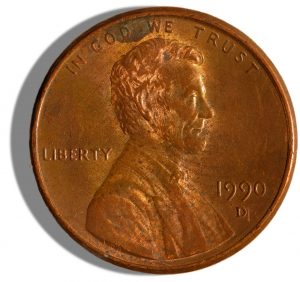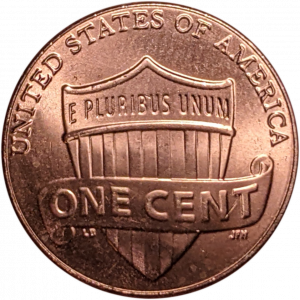
 Log In× Close
Log In× Close
May 20, 2024
When the United States Mint was established in 1792, one of the first coins produced was the one-cent piece. Prior to the U.S. establishing its own currency, American colonists would use a mixture of coins from other countries for trade, with the British penny being the most popular. Hence, when the U.S. government began issuing its own currency, the common one-cent piece inherited the nickname “penny” from its British counterpart.
The first one-cent coin was designed by Benjamin Franklin and featured on its obverse (heads) side the image of a lady with flowing hair representing Liberty. Her design changed a few times over the years, with her flowing hair eventually being wrapped up in braids starting in 1808, when she started being portrayed wearing a Liberty headband. This design would last until 1857, when it would be replaced by the smaller Flying Eagle cent.



The original penny was nearly 50% larger than the modern one-cent piece and made from pure copper, making it more than five times as heavy as the modern penny. The so-called large cent was about the size of a modern half-dollar piece. The penny was shrunk nearer to its current size with the Flying Eagle cent in 1857, which would then be replaced by the Indian Head cent in 1859.
 The Lincoln cent was adopted in 1909 on what would have been Abraham Lincoln’s 100th birthday. Lincoln was the first figure from American history to have their likeness grace a piece of U.S. currency, which was the result of a wave of public sentiment stemming from the anniversary of the former President’s birth. This was also the first piece of U.S. currency to feature the motto “In God We Trust.”
The Lincoln cent was adopted in 1909 on what would have been Abraham Lincoln’s 100th birthday. Lincoln was the first figure from American history to have their likeness grace a piece of U.S. currency, which was the result of a wave of public sentiment stemming from the anniversary of the former President’s birth. This was also the first piece of U.S. currency to feature the motto “In God We Trust.”
Lincoln’s likeness as featured on the penny is actually based on the work of a Lithuanian-born Jew named Victor David Brennar who had made a bas-relief of Lincoln based on an old photograph. The relief had caught the attention of then-president Theodore Roosevelt. In some older coins, Brennar’s initials can be found on the rim of Lincoln’s bust.
Modern pennies are copper-plated zinc, which is both lighter and cheaper. The use of zinc in the minting of one-cent pieces began at the peak of World War II, when the demand for copper to be used in munitions meant that an alternative had to be found for minting currency. From World War II until 1982, pennies were 95% copper and 5% zinc. This changed again in 1982 because the value of the copper used to mint a penny had risen above the value of the currency itself, leading to the modern composition of 97.5% zinc and 2.5% copper.
 The modern Lincoln cent was redesigned in 2009, in honor of the bicentennial of Lincoln’s birth. This design did away with the Lincoln memorial on the reverse side of the coin in favor of a shield bearing the motto of the United States, E Pluribus Unum. There were also four special reverse-face designs minted in limited quantities for Lincoln’s bicentennial, each depicting a scene from Lincoln’s life.
The modern Lincoln cent was redesigned in 2009, in honor of the bicentennial of Lincoln’s birth. This design did away with the Lincoln memorial on the reverse side of the coin in favor of a shield bearing the motto of the United States, E Pluribus Unum. There were also four special reverse-face designs minted in limited quantities for Lincoln’s bicentennial, each depicting a scene from Lincoln’s life.
I hope you enjoyed learning about the origins, designs, and transformation of the U.S. penny since the founding of our country, and I hope you think a bit more about these inconspicuous pieces of currency the next time you feel them jingling around in your pocket.
 Kayla Schnellman is the Assistant Branch Manager for our Claussville Office. She has worked for New Tripoli Bank for over five years, where she has worked as Community Banker, Customer Service Representative, and Head Teller. When she's not working, she enjoys spending time with friends and with her three dogs.
Kayla Schnellman is the Assistant Branch Manager for our Claussville Office. She has worked for New Tripoli Bank for over five years, where she has worked as Community Banker, Customer Service Representative, and Head Teller. When she's not working, she enjoys spending time with friends and with her three dogs.